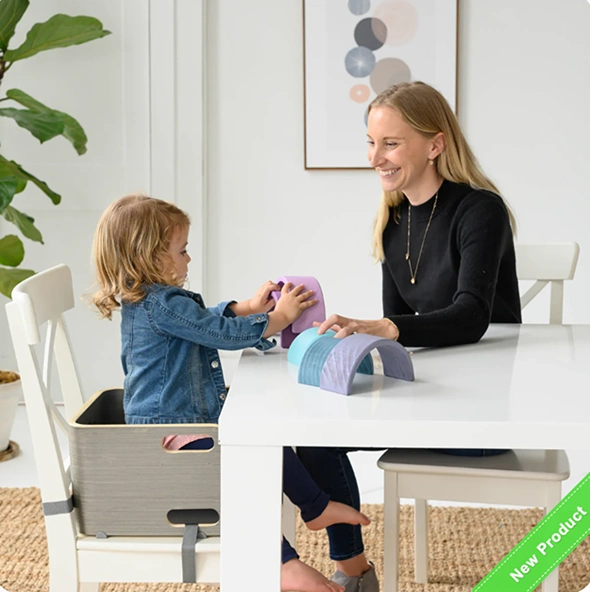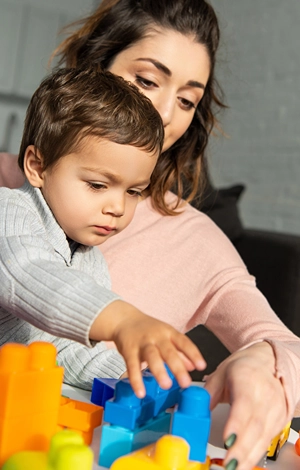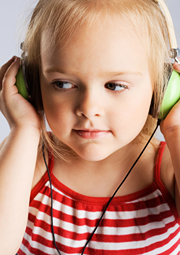Top Benefits of Montessori-Inspired Adjustable Chairs for Kids
The Montessori method of education emphasizes fostering independence and self-regulation within defined boundaries while honoring how a child’s growth process naturally unfolds. This explains the surge in demand for Montessori furniture like adjustable chairs for kids.
As an extension of Montessori principles for child well-being and learning, let’s explore the unique advantages these adjustable chairs offer to children and have a deeper look into their benefits.
Encouraging Independence
One key aspect of education is encouraging independence in kids. In this spirit, a new type of chair has been created to help children feel empowered by enabling them to customize their sitting positions to suit their preferences.
This feature gives them a sense of agency over their surroundings. These chairs are equipped with mechanisms tailored for children, making it effortless for them to make changes. It also fosters confidence in their own intuition!
When engaging in activities, like reading or drawing or even having a snack break, they have the flexibility to adjust the chair for comfort, which fosters a sense of independence and self-reliance—a development towards building self-assurance.
Montessori chairs promote children’s independence and learning.
Find them on the Little Partners® website!
Promoting Proper Posture
Having a proper and good posture is really important for a child’s growth and well-being. It can make a significant difference in a child’s development!
Children sometimes slump on seats that are too high or too low for them, which can be painful and impair concentration. Ergonomics is taken into consideration while designing chairs that are influenced by the Montessori approach. Each child’s body form may be accommodated by adjusting them. This builds muscles and maintains a healthy spine, making sitting more pleasant.

Credit: Little Partners
Sitting up straight in a placed chair can help children develop posture habits that may benefit them throughout their lives.
Fostering Collaboration and Social Interaction
In a Montessori classroom, collaboration and social interaction are key components of learning. Adjustable chairs for kids make it easier for children to move around and join group activities or sit across from each other for collaborative work.
The mobility of these chairs allows kids to create their own spaces where they feel comfortable, fostering a sense of community and shared responsibility.
By giving children control over their seating arrangements, these chairs encourage natural interactions and group discussion skills that are essential for social development.
Adaptability to Different Learning Environments
Children don’t limit their learning to classrooms. They absorb knowledge from around them. In any setting they find themselves, these chairs offer flexibility! The flexibility of Montessori chairs for children makes them perfect for learning spaces, like traditional classrooms, cozy home setups, or even outdoor learning areas!
These chairs are known for being light, portable, and sturdy enough to fit in across environments. Parents and educators value this adaptability since it enables them to establish environments tailored to each child’s requirements rather than adopting a uniform approach for all students.
It is a long-term investment that evolves with the child while providing enduring benefits.
Enhancing Focus and Engagement
An environment that supports a child’s natural posture and comfort goes a long way in maintaining focus.
When children can adjust their seating to feel both physically and mentally comfortable, they’re less likely to fidget or feel distracted. Montessori chairs for children encourage them to remain engaged in their activities, supporting an immersive learning experience. Research suggests that when children are comfortable, their focus improves, and they are more likely to stick with tasks longer, resulting in a deeper, more meaningful learning process.
Supporting Lifelong Learning Skills
The philosophy of Montessori focuses on a child’s wellness and nurturing life skills. The use of chairs that subtly but significantly contribute to this goal by encouraging children to adjust their seating arrangements. This promotes self-regulation, a skill that impacts various aspects of their development, including learning and emotional well-being.
By making decisions about their seating preferences based on their own comfort and surroundings, children develop the ability to adapt effectively while reinforcing their sense of competence and independence. Making small changes, such as adjusting a chair, can positively impact their development in the future by building resilience and self-awareness over time.
In conclusion
Montessori-inspired adjustable chairs are more than basic furniture; they encapsulate the principles of self-reliance and teamwork while also promoting versatility. This aligns with the belief system that fosters a child’s natural growth and evolution.
For parents and educators who choose to purchase these chairs, they are enabling children to cultivate a variety of abilities that transcend settings ultimately nurturing a holistic passion for lifelong learning.






 Katie Brenneman is a passionate writer specializing in education, mental health, family lifestyle and online safety. When she isn’t writing, you can find her with her nose buried in a book or hiking with her dog, Charlie. You can follow her on
Katie Brenneman is a passionate writer specializing in education, mental health, family lifestyle and online safety. When she isn’t writing, you can find her with her nose buried in a book or hiking with her dog, Charlie. You can follow her on 



